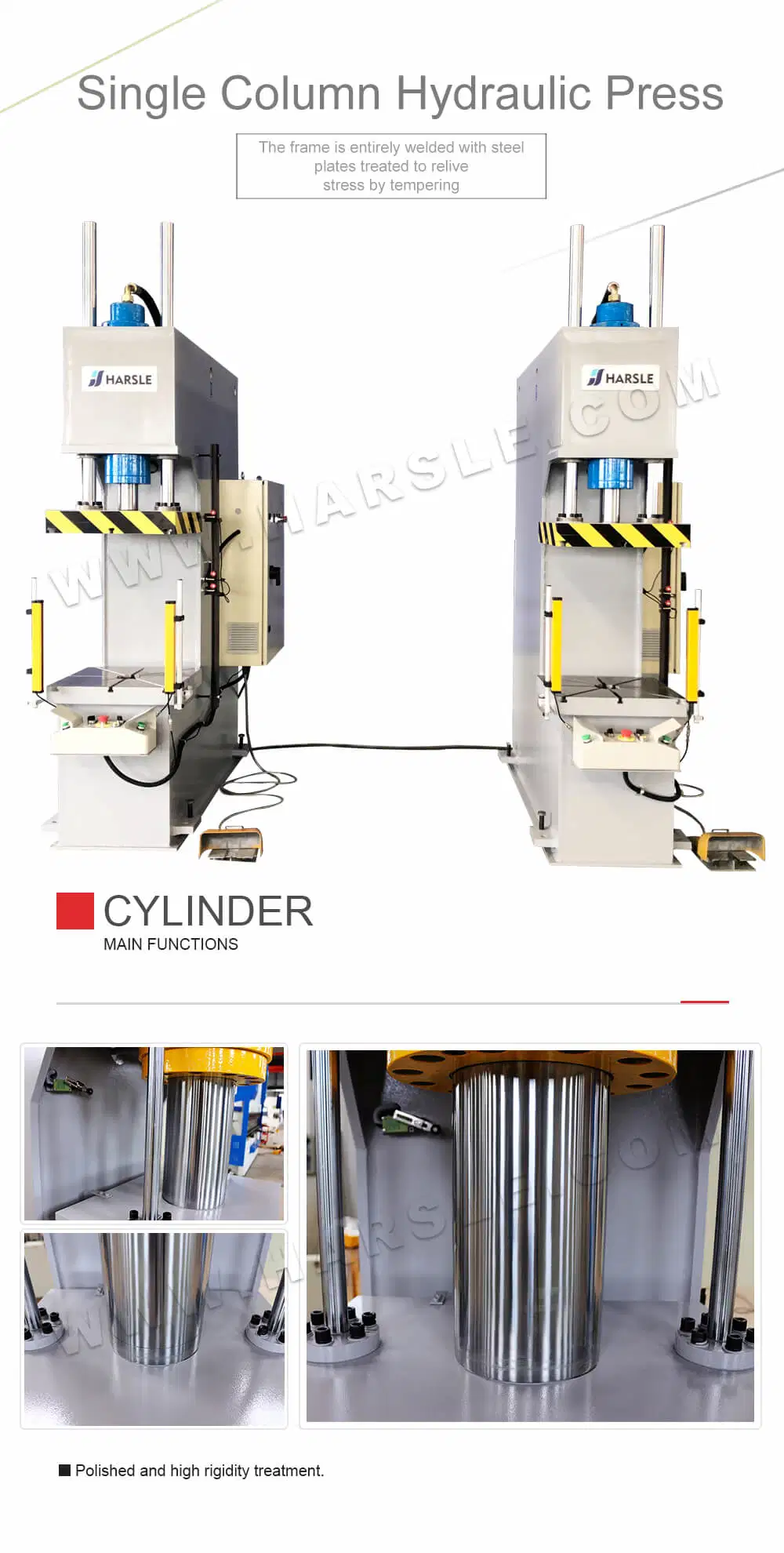Basic Info.
Model NO.
Y41-100T
Condition
New
After-sales Service
Overseas Third-Party Support Available
Type
C Type Hydraulic Press
Certification
CE
Transport Package
Standard Package
Specification
1600x1200x2900mm
Trademark
HARSLE
Origin
China
Production Capacity
10 Sets/Month
Packaging & Delivery
Package Size
50.00cm * 40.00cm * 30.00cm
Package Gross Weight
500.000kg
Product Description
Best Quality High Efficiency High Accuracy Hydraulic Press Single Column Hydraulic Press
A hydraulic press is a machine that uses a hydraulic cylinder to generate a compressive force. This force is typically used to shape or form metal, compress powder, or crush objects. The basic components of a hydraulic press include:
Hydraulic Cylinder: This is the primary component that generates force. It consists of a piston inside a cylinder filled with hydraulic fluid. When pressure is applied to the fluid, it acts on the piston, creating a force that can be transmitted to the object being pressed.
Hydraulic Pump: The pump is responsible for generating the hydraulic pressure required to move the piston. It draws hydraulic fluid from a reservoir and pressurizes it before sending it to the hydraulic cylinder.
Control Valves: Valves are used to control the flow of hydraulic fluid, enabling precise control over the movement of the hydraulic press. Different valves can be used to adjust the speed, force, and direction of the press.
Frame: The frame provides the structural support for the hydraulic press. It must be robust enough to withstand the forces generated during the pressing operation.
Worktable or Bed: This is the surface on which the material or object to be pressed is placed. It can be flat or have specific features depending on the intended application.
The operation of a hydraulic press involves filling the hydraulic system with fluid and applying pressure to the hydraulic cylinder. As the piston moves, it exerts force on the object placed on the worktable, achieving tasks such as forming, shaping, or compressing materials.
Hydraulic presses are widely used in various industries, including metal forming, rubber molding, plastic molding, and powder compaction. They are valued for their ability to exert high amounts of force evenly and consistently, making them suitable for a range of manufacturing processes.
Hydraulic Cylinder: This is the primary component that generates force. It consists of a piston inside a cylinder filled with hydraulic fluid. When pressure is applied to the fluid, it acts on the piston, creating a force that can be transmitted to the object being pressed.
Hydraulic Pump: The pump is responsible for generating the hydraulic pressure required to move the piston. It draws hydraulic fluid from a reservoir and pressurizes it before sending it to the hydraulic cylinder.
Control Valves: Valves are used to control the flow of hydraulic fluid, enabling precise control over the movement of the hydraulic press. Different valves can be used to adjust the speed, force, and direction of the press.
Frame: The frame provides the structural support for the hydraulic press. It must be robust enough to withstand the forces generated during the pressing operation.
Worktable or Bed: This is the surface on which the material or object to be pressed is placed. It can be flat or have specific features depending on the intended application.
The operation of a hydraulic press involves filling the hydraulic system with fluid and applying pressure to the hydraulic cylinder. As the piston moves, it exerts force on the object placed on the worktable, achieving tasks such as forming, shaping, or compressing materials.
Hydraulic presses are widely used in various industries, including metal forming, rubber molding, plastic molding, and powder compaction. They are valued for their ability to exert high amounts of force evenly and consistently, making them suitable for a range of manufacturing processes.









